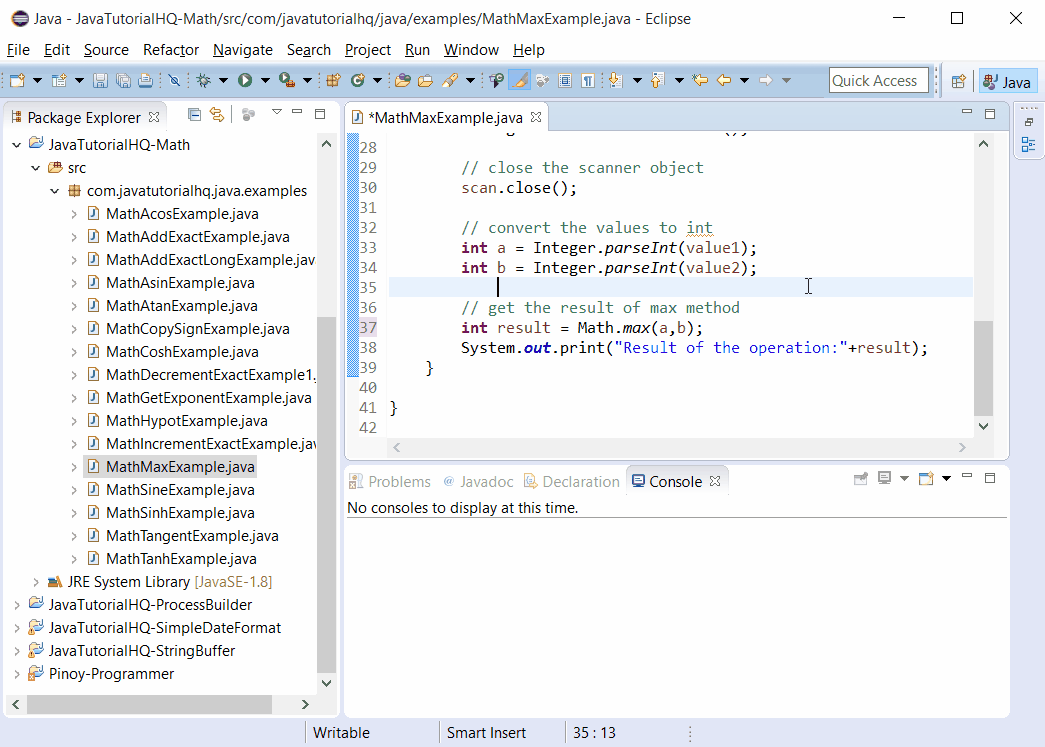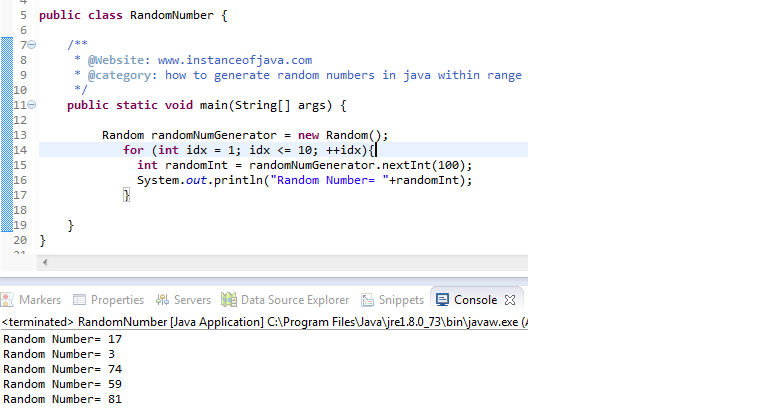

So let's look at some of the use-cases of it. The reason is Math.random returns a random double within the range 0.0 (inclusive) and 1.0 (exclusive).īy far now, we have understood the functionality of Math.random. Every time we execute this program, a new random double is printed in the console. In the above program, we use Math.random() to generate a random double and store it in a variable named value. Random random new Random () int abc random.nextInt (100) Share. int abc (int) (Math.random () 100) However, if you instead use the class it has built in method for you.
#RETURN VALUE 0 3 MATH.RANDOM JAVA CODE#
Let’s jump into some code and then try to understand the functionalities of Math.random. For your code to compile you need to cast the result to an int. To get a specific range of values, We should multiple by the magnitude of the.

Public static double random() Math Random Method in Java Example Using Math.random Math.random() generates a double value in the range 0,1). That said, if many threads need to generate pseudorandom numbers at a great rate, that may reduce the contention for each thread to have its own pseudo-random-number generator.
#RETURN VALUE 0 3 MATH.RANDOM JAVA GENERATOR#
We use this new pseudorandom-number generator for all calls to this method and nowhere else.Īlso, this method is appropriately synchronized to allow correct usage by more than one thread. So the first time we call the Math.random method, it will internally create a single new pseudorandom-number generator using the class. The () is used to return a pseudorandom double type number greater than or equal to 0.0 and less than 1.0. It first creates an object of the class and then calls the nextDouble() method inside it to return a double. These numbers are generated pseudorandomly with (approximately) uniform distribution over the below range:Ġ.0<=value<1.0, where value is the random number It’s useful in returning a pseudorandom double greater than or equal to 0.0 and less than 1.0. Math.random() is an in-build method from the package. FAANG Interview Questions on Java Math Random.Differences Between Math.random() and Random.nextInt().Generate a Random Number in the Range.Hence this article is dedicated to the math.random() method. You gotta do int abc (int) (Math. As explained by Aurund, Random objects created within a short time of each other will tend to produce similar output, so it would be a good idea to keep. at 10:57 GworfHi For 0 - 100 use int abc (int)Math.random ()101 God at 11:47 God Casting Math.random () without multiplying 101 first means abc will always be 0. Instead of hardcoding values, it’s better to stress test against randomly generated values. Random rand new Random() // nextInt as provided by Random is exclusive of the top value so you need to add 1 int randomNum rand.nextInt((max - min) + 1) + min See the relevant JavaDoc. Often in interviews, we see candidates need to check for corner cases and validate them. The math.random() method in Java helps generate pseudorandom numbers, which is very useful while stress-testing solutions against randomly generated values.


 0 kommentar(er)
0 kommentar(er)
